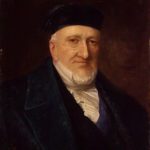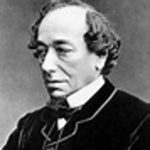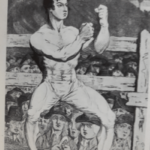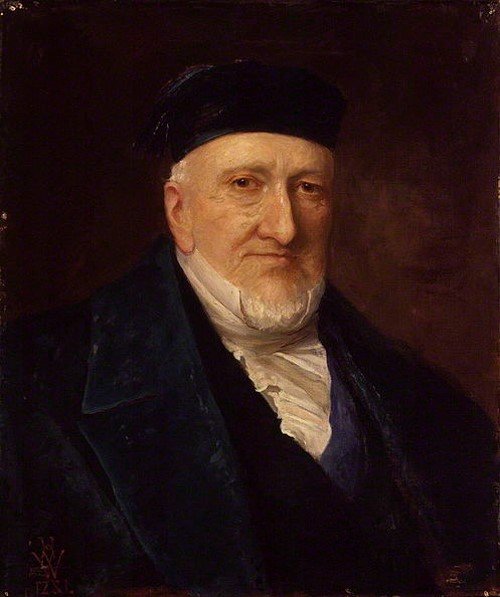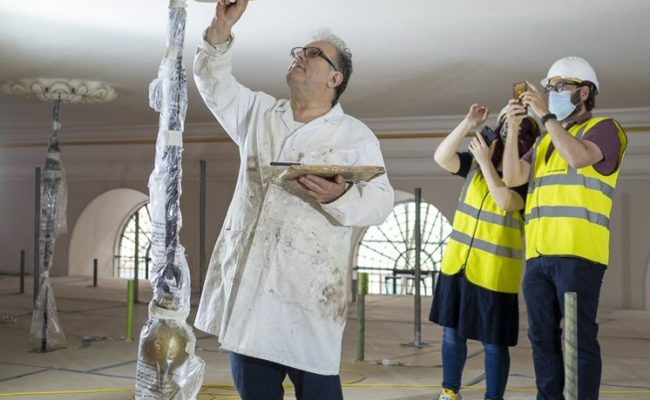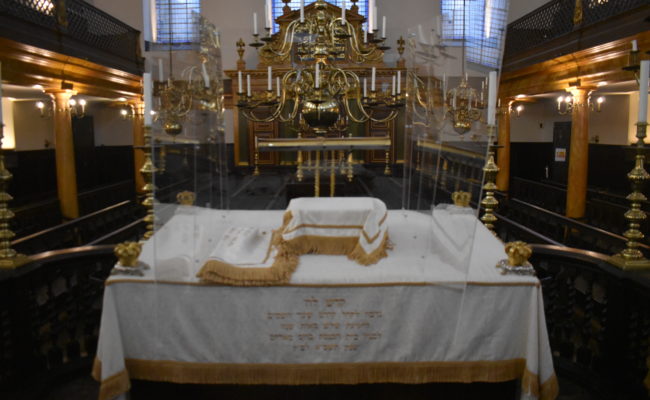Gallery 3: Some Remarkable People
There are many notable people whose lives are connected in diverse ways to the Bevis Marks synagogue.
Moses Montefiore

Portrait of Sir Moses Montefiore
Sir Moses Montefiore (1784 – 1885) was the most famous English Jew of his time, probably of all time. Passionate in his beliefs, both as a Jew and an Englishman, he became a legend throughout the entire Jewish world in his own lifetime.
He was born in 1784 and died in 1885, aged 100. As a young man, his uncle Moses Mocatta secured him a position as one of the only twelve brokers allowed to practise on the London Exchange. He married Judith Cohen, sister-in-law of Nathan Meyer Rothschild; and that connection helped him to make his fortune before the age of forty, when he retired from the Stock Exchange and devoted the rest of his long life to the interests of poor and oppressed fellow Jews.
Sir Moses came from an Italian, Sephardi family. Married to an Ashkenazi wife, he was so firm a believer in the unity of the Jewish people that he endowed each couple who married in his synagogue with a gift of money; and that sum was doubled for a “mixed marriage” between a Sephardi and an Ashkenazi.
His charities and benevolent foundations at home were on a large scale; and in visits to Palestine, Morocco, Rome, Russia and Turkey, he did what he could to relieve the persecution of Jews in those places. He was knighted by Queen Victoria in 1837 for these noble services; and was made a Baronet in 1846. Montefiore had a special devotion to the Holy Land, visited on many occasions and showed great commitment to improving the living conditions and economic sustainability of those communities.
When in London, Sir Moses Montefiore worshipped at the Spanish and Portuguese Jews’ Synagogue in Bevis Marks, a congregation to which he was devoted and which he served for many years as President of its Board of Elders.
In 1835 he was elected Sheriff of London and Middlesex, only the second Jew to occupy that position; and in 1837 he became President of the Board of Deputies of British Jews, a position he held for thirty-nine years. In addition to his work for oppressed Jews, Sir Moses also created a centre of Jewish life in Ramsgate, a fashionable seaside resort in the county of Kent. In 1833 Sir Moses opened his own synagogue in Ramsgate, close to his country house.
Daniel Mendoza
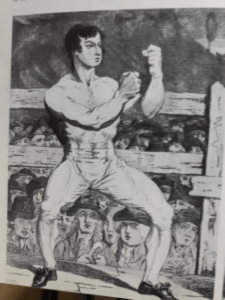
Daniel Mendoza engraving by Charles Jean Robineau, mezzotint by Henry Kingsbury (1789)
Daniel Mendoza was the first Jewish prize-fighter to become a champion. Though he stood only 5’7″ and weighed 160 pounds, Mendoza was England’s sixteenth Heavyweight Champion from 1792 to 1795. Always proud of his heritage, he billed himself as Mendoza the Jew.
He is the father of scientific boxing. At a time when the sport of boxing consisted primarily of barehanded slugging, Mendoza introduced the concept of defence. He developed the guard, the straight left, and made use of sidestepping tactics. This new strategy, the Mendoza School, also referred to as the Jewish School, was criticized in some circles as cowardly. But it permitted Mendoza to fully capitalize on his small stature, speed, and punching power.
A victory in his first professional fight in 1787 won him the patronage of the Prince of Wales (later King George IV), the first boxer to earn this honour.
His acceptance by British royalty (he was the first Jew ever to speak to England’s King George III) helped elevate the position of the Jew in English society and stem a vicious tide of anti-Semitism.
Mendoza, a descendant of Spanish Conversos (Jews coerced into conversion to Christianity) who had lived in London for nearly a century, became such a popular figure in England that songs were written about him, and his name appeared in scripts of numerous plays. His personal appearances would fill theatres, portraits of him and his fights were popular subjects for artists, and commemorative medals were struck in his honour.
Disraeli
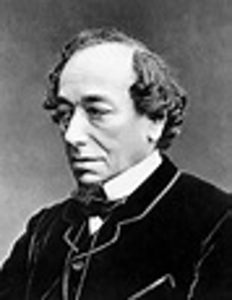
Portrait of Disraeli
Disraeli was of Italian-Jewish descent, the eldest son and second child of Isaac Disraeli and Maria Basevi.
The most important event in Disraeli’s boyhood was his father’s quarrel in 1813 with the synagogue of Bevis Marks, which led to the decision in 1817 to have his children baptized as Christians. Until 1858, Jews by religion were excluded from Parliament; except for the father’s decision, Disraeli’s political career could never have taken the form it did. Following a failed career as a writer Disraeli became engaged in politics becoming a Conservative MP and later Chancellor of the Exchequer. He later became Prime Minister twice and was said to be Queen Victoria’s favourite Prime Minister.
Rabbi David Nieto
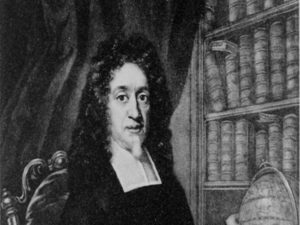
Rabbi David Nieto (1654 – 1728), leader of S&P community in London, but also distinguished polymath. (First rabbi at Bevis Marks – wrote Esh Dat on Jewish philosophy relevant to returning Conversos)
David Nieto was born in Venice, he studied medicine in Padua and then worked as a preacher and physician. In 1701 Nieto was called to London to serve as the haham of the Sephardi congregation at the newly built Bevis Marks Synagogue. He founded an orphanage in 1703 and a society for visiting the sick in 1709. He wrote on Jewish law and doctrine extensively. His son Isaac Nieto succeeded him as haham of Bevis Marks.
Catherine Da Costa (1679–1756)
Catherine was an English miniature painter, daughter of Dr. Fernando Mendez, physician to King Charles II. Catherine da Costa was the earliest known English Jewish artist and the first Jewish woman artist whose work has survived. A pupil of the famous drawing-master and mezzotint engraver Bernard Lens, she painted portrait miniatures of her family and of other members of the Jewish community. Among her works are portraits of her father in full 18th-century dress (1721) and of her ten-year-old son, Abraham da Costa (1714). She was married to Anthony Moses da Costa (1667/9–1747), a prosperous Sephardi merchant.
Grace Aguilar
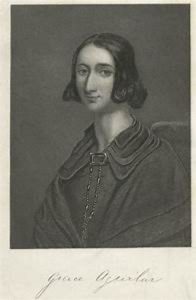
Grace Aguilar portrait from New York Public Library
Grace Aguilar was born on June 2, 1816, to Emanuel (1787–1845) and Sarah (1787–1854) Aguilar. Portuguese Jews whose ancestors had fled to England to escape the Inquisition, her parents settled in the northeast London suburb of Hackney, where Aguilar was born. Emanuel served as the Parnas, or lay leader, of London’s Spanish and Portuguese Synagogue at Bevis Marks, and the family were active participants in the Sephardic community. As a child, Aguilar contracted an undiagnosed illness that permanently weakened her and left her vulnerable to the other ailments from which she suffered throughout her life. The most serious of these included the measles (at age nineteen in 1835) and her final illness, a spinal ailment that paralyzed her muscles and lungs. These illnesses did not prevent her from keeping a multi-volume journal beginning at age seven, from dancing, from local travel, or from playing the piano and the harp, like other girls of the English middle class. To support herself and her mother after her father’s death, she ran a boys’ Hebrew school.
Aguilar was a highly productive writer – one of a striking, now neglected, cohort of talented Anglo-Jewish women authors active at the end of the eighteenth and in the early decades of the nineteenth century. She authored poems, novels, tales, and essays for popular magazines, such as The Keepsake, the American magazine Occident, and the annual Friendship’s Offering.
Jewish themes are fundamental to all her work, including her fiction, notably the nature and connections of Christianity and Judaism, and, within Judaism, the relation of rabbinical scholarship and Talmudic law (generally pursued and exercised by men) and spirituality and love (generally associated in her work with women). Firmly Jewish, as she remained throughout her life, Aguilar took part in the growing acculturation of English Jews. She also participated in the increasing demands of women for greater recognition in both the national culture and Jewish religion and culture.
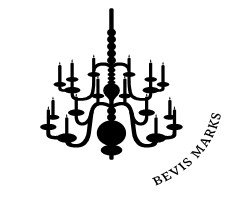
Author: Bevis Marks Synagogue
